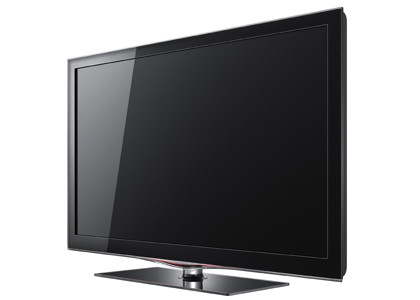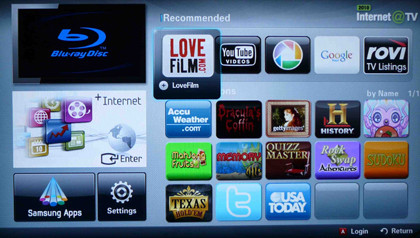Why you can trust TechRadar

Like many flat TVs, this Samsung employs various sound modes from the SRS labs. Under the SRS TheaterSound banner, presets include amplify, standard and Clear Voice.
Engage 'amplify' and it seems to lessen volume and narrow the soundscape somewhat, while Clear Voice simply increases the treble levels and almost completely removes background sound. The 'standard' setting proves the best option.
It creates a reasonably wide soundstage with decent low frequency sound and some quasi-surround effects with SRS TruSurround HD switched on. If you need it, there's another dialogue push feature called SRS TruDialog, which can be engaged simultaneously, though it appears to flatten audio and undo most of the good work.
Overall sound quality on the LE40C650 is acceptable, though that's judged against other flatscreen TVs that, as a genre, don't exactly impress. Here, sound is more powerful and nuanced than usual, though a separate sound system would be preferable.
Just as the remote lacks dedicated controls for this set's many picture settings, the same applies to audio – it could definitely do with a toggle button for SRS TruSurround HD.
Good value?
Samsung has successfully augmented LCD tech to produce excellent picture quality without resorting to LED side-lighting. That helps keep the price low and has enabled Samsung to include a few nifty extras such as Internet@TV and, of course, that integrated Freeview HD tuner.
The inclusion of hi-def channels will make the LE40C650 seems a good value way of buying a bigscreen TV and perhaps ending a subscription to Sky+HD or Virgin Media V+, though to be considered a true success, Internet@TV needs to include the much-publicised app for BBC iPlayer.

Until then, the LE40C650 remains a good value, versatile LCD TV that competes well with similar mid-range screens from the likes of Sony and Panasonic.
Current page: Samsung LE40C650: Sound and value
Prev Page Samsung LE40C650: Picture Next Page Samsung LE40C650: VerdictJamie is a freelance tech, travel and space journalist based in the UK. He’s been writing regularly for Techradar since it was launched in 2008 and also writes regularly for Forbes, The Telegraph, the South China Morning Post, Sky & Telescope and the Sky At Night magazine as well as other Future titles T3, Digital Camera World, All About Space and Space.com. He also edits two of his own websites, TravGear.com and WhenIsTheNextEclipse.com that reflect his obsession with travel gear and solar eclipse travel. He is the author of A Stargazing Program For Beginners (Springer, 2015),

